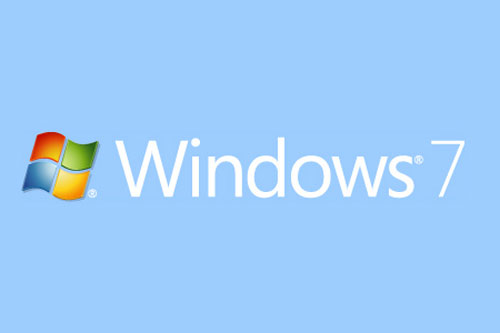What's new in the Windows 7 Release Candidate?
The Windows 7 release candidate that hit MSDN and Technet accounts is now publicly available. We take a look at what's occurred between the beta and the RC.


In terms of raw features, the only real biggie is that Internet Explorer 8 is now included in the operating system IE8 arrived too late for inclusion in the beta. IE8 can also be turned off now from the Windows Features section though it's not actually removed as it's still used in certain parts of the operating system, but it will stop popping up as a default when you don't want it to.
XP Mode
It's not directly part of the RC, but a new feature now available to download is Windows XP mode. This is a designed to enable Windows XP applications to run with guaranteed 100 per cent compatibility inside Windows 7 with the intention of helping businesses transfer over to Windows 7 seamlessly.
It consists of a packaged version of Windows XP running under Microsoft's Virtual PC application and is available as a download for Windows 7 Professional and Ultimate owners. As this is desktop virtualisation, a CPU with hardware virtualisation is a minimum requirement. Most recent CPUs from Intel and AMD feature the requisite Intel-VT or AMD-V technology, but unfortunately some recent models don't have the feature so you need to check carefully what CPU your systems have. Even then, the feature is normally turned off by default in the BIOS, so work has to be done to enable it there too.
Once installed though the apps will appear in the Windows 7 start menu and can even be pinned to the taskbar, though the flashy new Aero Peek previews won't be available.
Remote Media streaming is a new feature that will enable you to stream your media content over the internet from another Windows 7 machine enabling you to run your own personal Spotify service.
Security
Get the ITPro daily newsletter
Sign up today and you will receive a free copy of our Future Focus 2025 report - the leading guidance on AI, cybersecurity and other IT challenges as per 700+ senior executives
Windows used to treat USB memory keys in the same way as CD and DVD-ROM media and permitted applications to Auto run but this proved to be a loophole that that was enabling viruses and malware to spread. Microsoft has changed this behaviour and now programs on flash media will not run automatically a possible inconvenience to some, but probably a sacrifice worth making for the extra security.
Performance
Microsoft has been continually tweaking performance based on telemetry information it has obtained from the beta. For example, it aims to get the Start Menu to appear within 50-100ms, and it's been achieving this most of the time with more recent builds.
The reliability of the taskbar has now been improved too, and any changes are now saved within 30 seconds rather than as the end of the session. This avoids the scenario where an unexpected crash would mean that a user's carefully arranged desktop would appear as default after a reboot.
These are just some of the tweaks and changes that Microsoft has made. It's good to know that the company is really working hard to improve its operating system and learn the lessons of Vista.
Benny Har-Even is a twenty-year stalwart of technology journalism who is passionate about all areas of the industry, but telecoms and mobile and home entertainment are among his chief interests. He has written for many of the leading tech publications in the UK, such as PC Pro and Wired, and previously held the position of technology editor at ITPro before regularly contributing as a freelancer.
Known affectionately as a ‘geek’ to his friends, his passion has seen him land opportunities to speak about technology on BBC television broadcasts, as well as a number of speaking engagements at industry events.
-
 Should AI PCs be part of your next hardware refresh?
Should AI PCs be part of your next hardware refresh?AI PCs are fast becoming a business staple and a surefire way to future-proof your business
By Bobby Hellard Published
-
 Westcon-Comstor and Vectra AI launch brace of new channel initiatives
Westcon-Comstor and Vectra AI launch brace of new channel initiativesNews Westcon-Comstor and Vectra AI have announced the launch of two new channel growth initiatives focused on the managed security service provider (MSSP) space and AWS Marketplace.
By Daniel Todd Published
-
 Tiny11 review: Windows 11 with only 2GB of RAM
Tiny11 review: Windows 11 with only 2GB of RAMReview A version of Windows 11 for older machines that don't meet the full requirements
By Nik Rawlinson Published
-
 Red Hat Enterprise Linux becomes foundational operating system for Cohesity Data Cloud
Red Hat Enterprise Linux becomes foundational operating system for Cohesity Data CloudNews New strategic partnership between Red Hat and Cohesity aims to drive innovation in the data security and management space
By Daniel Todd Published
-
 Ubuntu shifts to four-week update cycle
Ubuntu shifts to four-week update cycleNews Critical fixes will also come every two weeks, mitigating the issues involved with releasing prompt patches on the old three-week cadence
By Richard Speed Published
-
 AlmaLinux follows Oracle in ditching RHEL compatibility
AlmaLinux follows Oracle in ditching RHEL compatibilityNews Application binary compatibility is now the aim with 1:1 now dropped
By Richard Speed Published
-
 How big is the Windows 10 cliff-edge?
How big is the Windows 10 cliff-edge?ITPro Network With some comparing the upcoming Windows 10 end of life to Windows XP, we ask members of the ITPro Network for their insight
By Jane McCallion Published
-
 Everything you need to know about the latest Windows 11 updates - from bug fixes to brand-new features
Everything you need to know about the latest Windows 11 updates - from bug fixes to brand-new featuresNews Two new cumulative updates are on the way and will be installed automatically on Windows 10 and Windows 11 machines
By Rory Bathgate Published
-
 How to download a Windows 11 ISO file and perform a clean install
How to download a Windows 11 ISO file and perform a clean installTutorial Use a Windows 11 ISO to install the operating system afresh
By John Loeppky Published
-
 We could all benefit from better Windows and macOS accessibility features
We could all benefit from better Windows and macOS accessibility featuresOpinion Today’s accessibility features can help you work through a nasty injury, but there’s still plenty of room for improvement
By Barry Collins Published